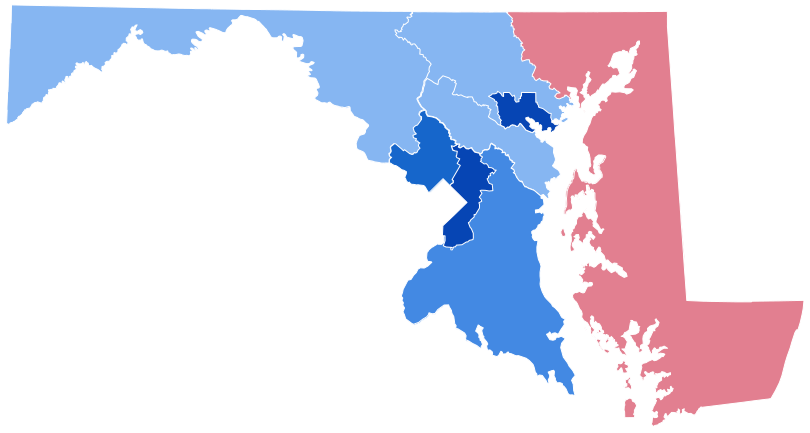The Future of Solar on the Eastern Shore

Maryland goals for clean and renewable energy are ambitious.
Gov. Wes Moore (D) has announced a goal to achieve 100% clean energy by 2035.
The state’s goal for 100% renewable energy is 2040, as outlined in the latest Renewable Energy Portfolio Standard (RPS).
Are those the same? Not necessarily.
Also known as carbon-free or net zero emissions, clean energy generates no carbon emissions. Its sources can be renewable or non-renewable.
Renewable energy is a naturally replenishing resource that produces zero emissions.

In 2021, nuclear power accounted for almost 37% of the state’s energy.
In 2021, only about 13% of Maryland’s energy came from renewable sources.
So, in 2021 clean energy accounted for 50% of the state’s energy.
We’re a lot closer to meeting our clean energy goal than our renewable energy goal. How does solar power factor in?

Source: Maryland Manual Online
The U.S. Solar Photovoltaic Database is an online resource that maps the locations and array boundaries of solar facilities with a capacity of one megawatt (mw) or more that became operational before 2022.
We can use this resource to see how the Eastern Shore solar installations contribute to Maryland’s renewable energy goal.
According to the database, there are 68 solar installations currently operational in the state, with a combined capacity of 431mw.
(This analysis also includes the Bluegrass Solar installation in Queen Anne’s County, which came online in 2022, after the USSPD was compiled; this inclusion adds 101mw to the Eastern Shore energy output. Bluegrass is the largest operating solar facility in the state.)
Twenty-five of the state’s solar farms are on the Shore, with a total capacity of 269mw. This is 62% of the state’s capacity. The Eastern Shore accounts for one-third of the state’s land.
Where are the solar farms on the Eastern Shore and elsewhere in Maryland?


The less-developed and less-populated Eastern Shore has more “room” (agricultural fields, forested land) for solar farms, so these counties will be shouldering the brunt of utility-scale solar development in the future.
In the past six years, of the 19 solar projects submitted to or approved by the Maryland Public Service Commission, 10 are on the Eastern Shore. Additionally, there are at least five older projects that are not yet operational.

Source: Maryland Public Service Commission
Of the 15 projects yet to be built:
- When all are operational, the solar capacity on the Shore will more than triple, to 903mw.
- Projects are becoming larger: eight are 45mw or more, whereas only two existing projects are that large.
- Cherrywood Solar in Caroline, 202mw, 1085 acres, (online in 2026) is the largest proposed solar generating facility in Maryland to date.
- Waypost Solar, also in Caroline, 92mw, 495 acres.
- The Porter Mill solar farm in Wicomico County, 46mw, will provide nearly three times the energy output of all the county’s other utility-scale solar installations combined.
Even those who favor solar and renewable energy have had problems with the approval process. There have been conflicts between officials at the local level and those at the Public Service Commission about certain issues, particularly the siting of solar facilities. Members of the community have been outspoken about the preservation of rural character. Farmers, landowners, and developers have a vested interest in how the approval process plays out as well. But improvement may be coming.
In a Nov. 21 phone interview with Herald Mail Media, Fred Hoover, the new chair of the Maryland Public Service Commission, said, “There have been a lot of disagreements between the local governing authorities and the solar developer industry, and to a certain degree with some of the farm communities. My goal is to get everybody in the room, exchanging ideas, and hopefully coming up with consensus proposals.
“The [approval] process does not allow a local government to use their zoning authority to prevent the location of the energy facility,” he added. “Some of the rural counties have had concerns about the exact location of where the solar projects are going.”
The commission is conducting a one-day public conference on the topic on Dec. 15, in Baltimore. The goal of the meeting, according to Hoover, is “to get all the relevant folks in the room, get them to talk to each other, and see if there is some room for consensus.”
Changes could also come administratively, through informal agreement, or via legislation in the 2024 session.
New solar installations will continue to be built. The process of approving projects needs to be as painless as possible for all involved.
Jan Plotczyk spent 25 years as a survey and education statistician with the federal government, at the Census Bureau and the National Center for Education Statistics. She retired to Rock Hall.
Common Sense for the Eastern Shore







